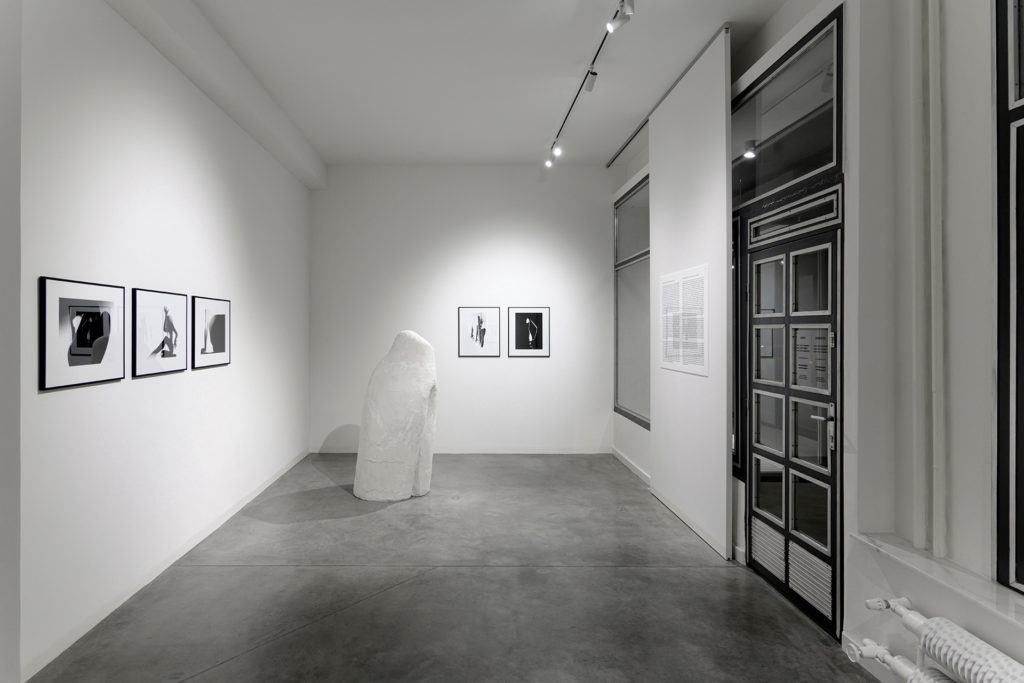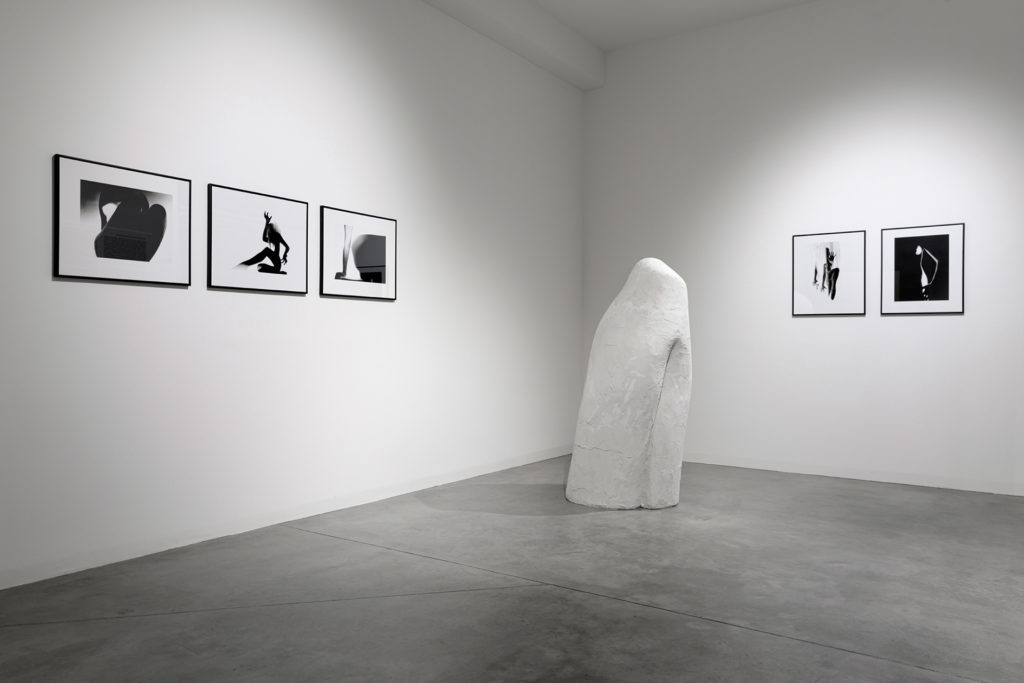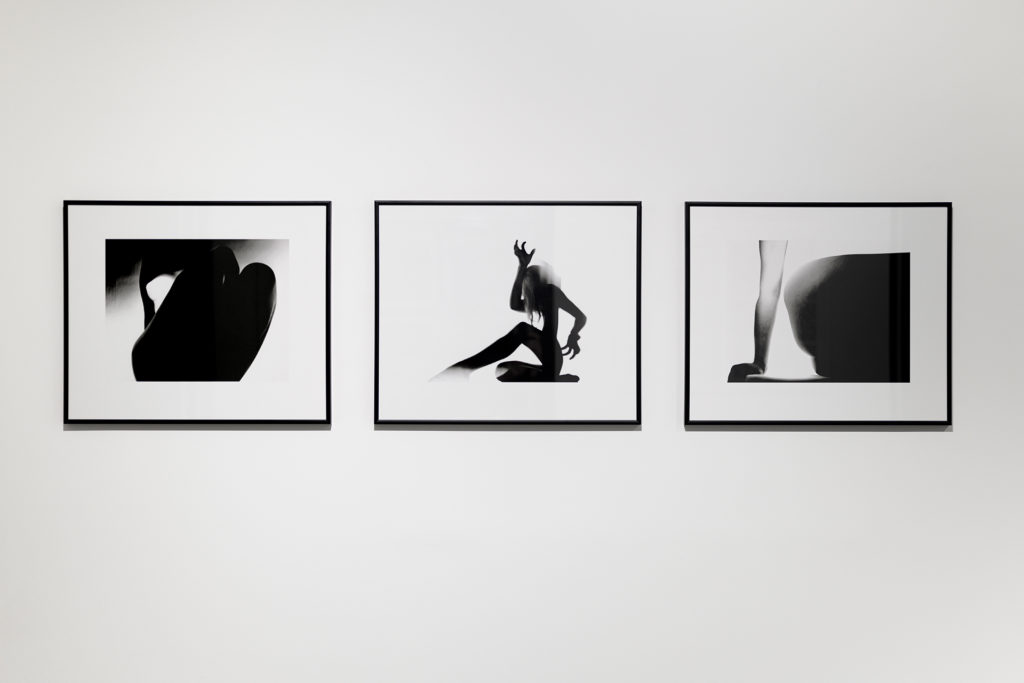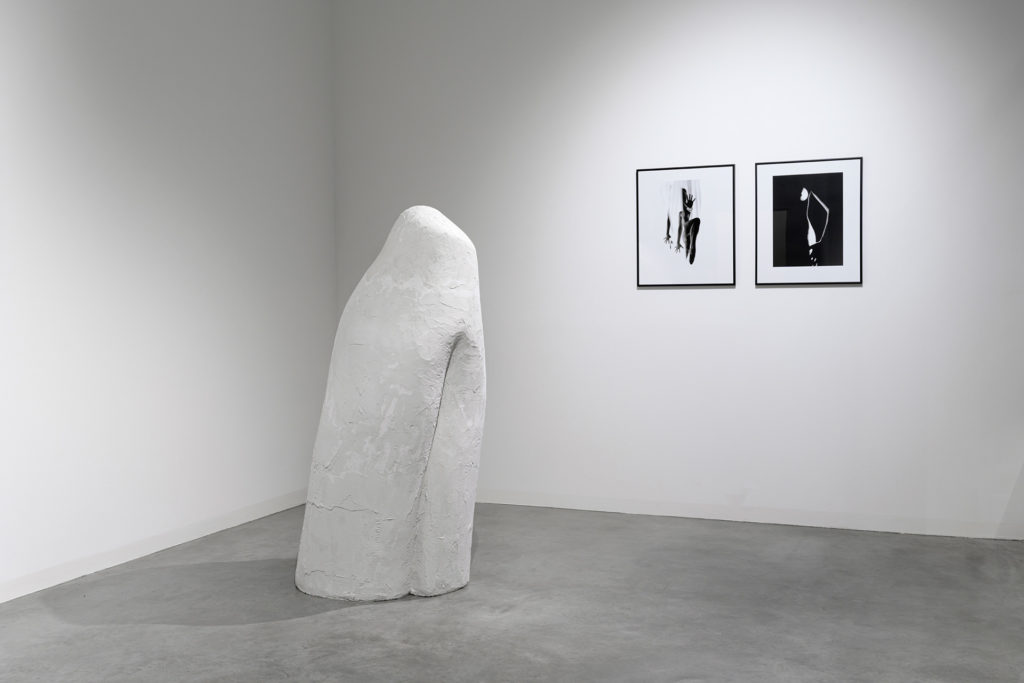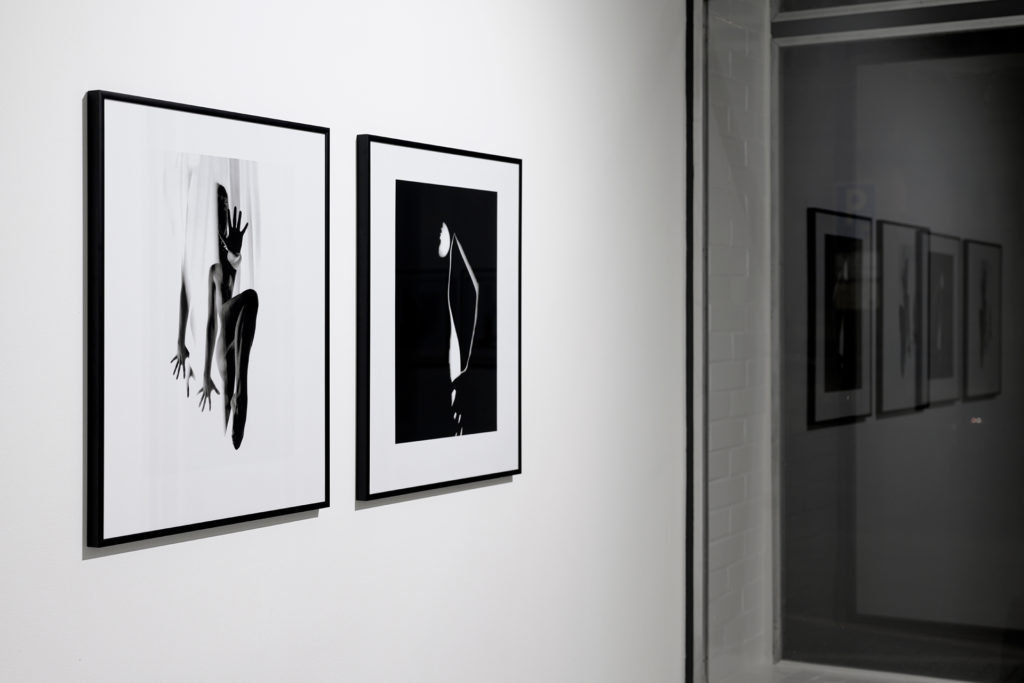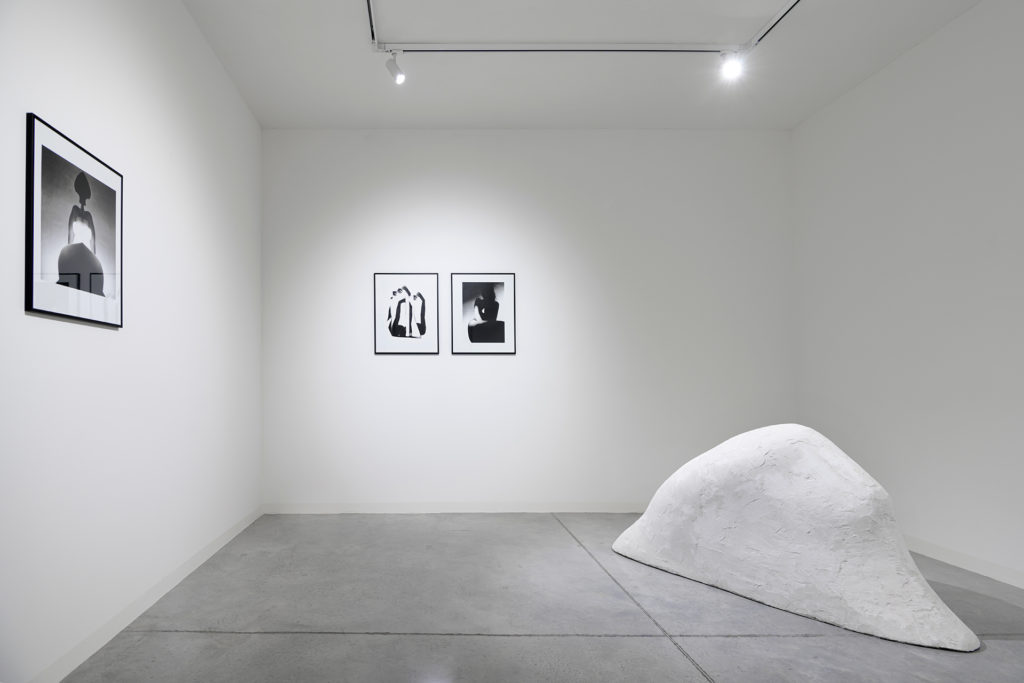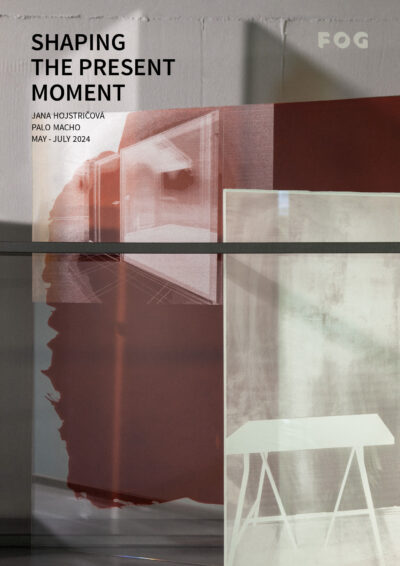Past exhibition
Curves
Oľga Bleyová, Ludmila Hrachovinová
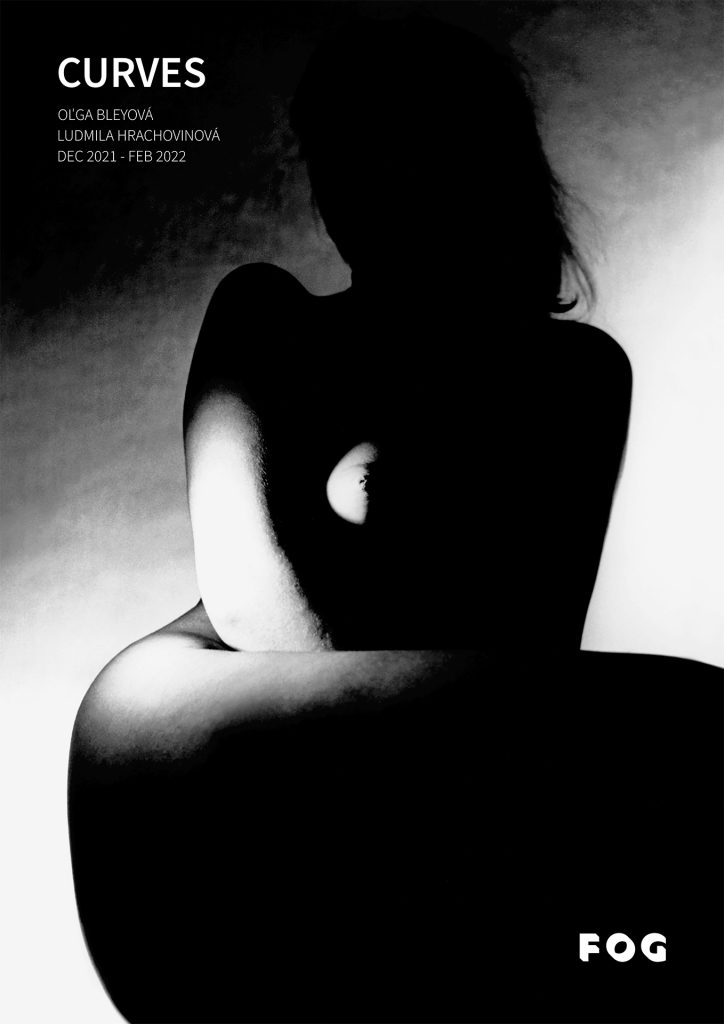
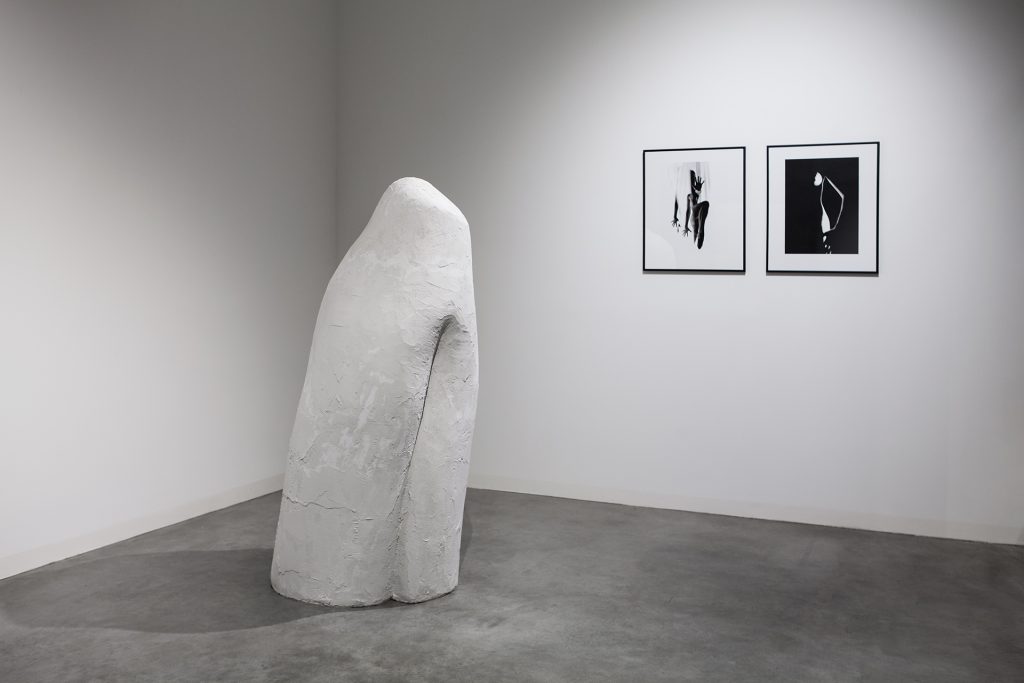
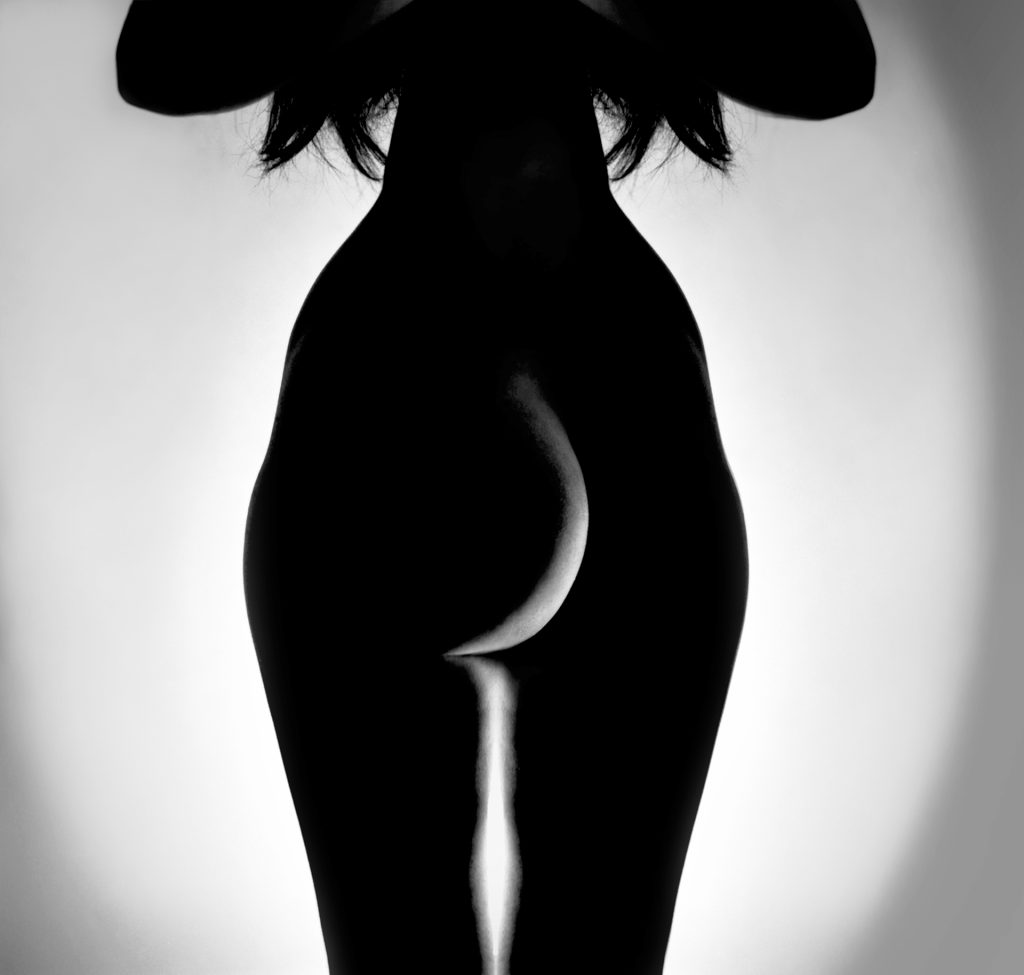
The concept of this exhibition, which features two artists who differ in their generational background and in their artistic forms, is based on a unique common point we can find in the works of both, though in different phases of their artistic production. It is the search for a sufficient degree of abstraction to maintain recognizable figurative elements. The photographs by Oľga Bleyová, who died in 2019, represent a completed body of work, including portraits, reportage, still-lifes and, best known of all, female nudes. She kept on returning to this subject throughout her life and the viewer can notice certain variations in her approach. However, all of her approaches clearly demonstrate an attempt to simplify the motif of the body into an essence that can still be recognized and is able to carry the message of female beauty. In Bleyová’s nudes we can identify two basic, parallel lines of simplification. One, which is rather graphic, works with the outlines of the body’s curves and eliminates them to the point of creating a two-dimensional effect, while light and shadow are limited to nearly black and white. The other line, which works with light and shadow in a sculptural manner, uses a broad scale of grey to model the mass of a human torso and articulate three-dimensionality. It needs to be said that these two lines do not exist separately. They often interconnect in one work. The author experiments with them to find still new ways to abstract femininity, from subtlety to sculpturality, from the focus on a body close-up to a compact composition of a mirrored image.
While the nudes by Oľga Bleyová can without any doubt be considered among her most distinctive work, the artistic process of Ludmila Hrachovinová, representing the young – or rather the younger middle – generation of artists, is still open to new means of expression. Hrachovinová has appeared on the artistic scene as a painter whose work has been characterised by an overlap to performance. In her large-format canvas she has demonstrated tendencies towards abstraction, with subtle hints of anthropomorphic shapes, seemingly out of context. In this respect, her recent sculptures might be viewed as being out of context, though in regard to her secondary school training in ceramics it does have a foundation. Moreover, it clearly derives from her means of expression as a painter. While before there was a surface with references to parts of a human body, so now the author looks for a minimal degree of figurative concretisation in plaster.
As noted above, Bleyová’s body of work is complete and as such it can be evaluated as a whole in a particular context. By contrast, Ludmila Hrachovinová is in a certain phase of discovery of entirely new means of expression and so it is too early to analyse her sculptures in relation to her paintings. Despite this fact, both artists meet in their vision of a human body in abstraction. Both, though each in her own way and in a different medium, search for possibilities to work with a solid mass. They experiment with their means of expression to achieve an ideal degree of suggestion. They strip their objects of context to focus on their essence. Along with the similarity in their artistic concept, we find one more connection between both authors in relation to the exhibited works: though separated in age by fifty years, they created the exhibited works when each was about the same age. Meanwhile, other factors, such as the above-mentioned generational difference, enrich this common meeting point and create an inspirational tension.



